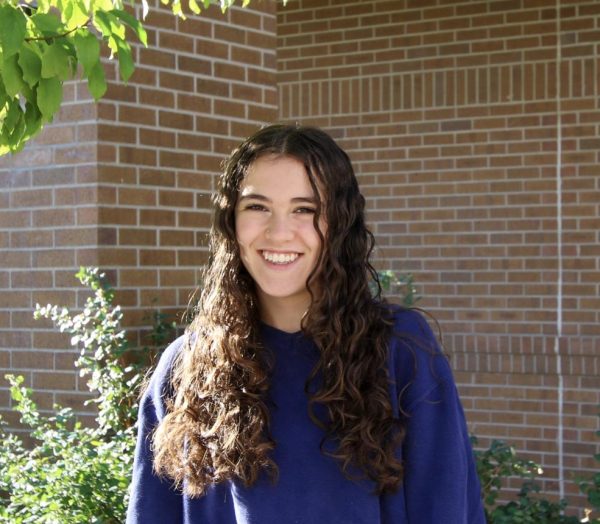Terry Clark Hangs up Apron
Terry Clark, right, smiles next to his wife, left. Clark was the Nutrition Service Manager at SHS, and he is retiring at the end of the year.
May 25, 2021
Every morning, the schools’ kitchens are bustling with cooks preparing food for a district of over 1,000 students. The kitchen has become a well oiled machine, but there is one vital person behind all the food made for us, Terry Clark.
Clark first joined the district through groundskeeping in 2013, which he found out about through an advertisement in the paper.
“There was a lot of excitement when I got the job because I was the only groundskeeper, so they turned all the schools over to me,” Clark said.
Because of this, he was able to form his own schedule. He maintained the high school on Monday, the middle school on Wednesday, and the elementary school on Friday, eventually picking up the Early Childhood Center as well.
After a few years of groundskeeping, Clark saw another advertisement in the newspaper for someone to take over as the Nutrition Service Manager for the district.
“It gets harder to do groundskeeping as you get older, so I thought, ‘Why don’t I try to get this job?’,” he said.
Before Clark moved to Salida, he and his wife owned two restaurants in Trinidad and Pueblo, and that experience helped him step up into the position.
“When you own restaurants you obviously like to feed people, but there’s so many regulations that it kinda takes the joy out of it,” Clark explained.
All the food our schools serve is regulated by the US Department of Agriculture (USDA), through the Colorado Department of Education (CDE). They carefully regulate the amount of fruits, vegetables, wheats, grain, etc… that goes into every meal, which all has to be accounted for by Clark.
“When I first started this job, I thought I was going to be a cook, but it turns out, I spend a lot of my time on the computer doing inventory.”
Clark is in charge of keeping track of production records, food components, and applications. He also works with CDE to figure out how much to charge for lunch the next year. CDE sends out a formula each year called AID Lunch Equity, which uses the number of kids fed the year before divided by the school’s price, to tell him what the school needs to charge for lunch the following year.
After working his whole life, Clark is excited to retire, “Most of my life’s been spent on this side of the Mississippi, so I’d like to go East,” Clark said.
He plans to sell his house and travel the United States in a camper with his wife and two dogs. He is looking forward to seeing the lakes in Maine and Key West in Florida.


